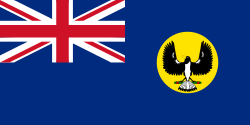South Australian state election, 1975
South Australian state election, 1975

|
|
|
|
|
|
State elections were held in Australia on 12 July 1975. All 47 seats in the South Australian House of Assembly were up for election. The incumbent Australian Labor Party led by Premier of South Australia Don Dunstan defeated the Liberal Party of Australia led by Leader of the Opposition Bruce Eastick.
Independent: Ted Connelly
Background
The drop in major party primary votes was due to the socially progressive Liberal Movement (LM) led by Robin Millhouse who achieved 18.3 percent of the primary vote and 2 seats. The party was a breakaway faction of the Liberal and Country League (LCL) which disbanded in 1973, the party which was the predecessor to the South Australian Liberal Party of Australia. Stemming from discontent within the ranks of the LCL, it was first formed by former Premier Steele Hall as an internal group in 1972 in response to a lack of social and acceptance of electoral reform within the LCL. A year later, when tensions heightened between the LCL's conservative wing and the LM, it was established on its own as a progressive liberal party. When still part of the league, it had eleven representatives; on its own, it initially had three.
The election was fought with the Liberal Party, the Liberal Movement, and the Nationals all competing for votes against Labor, in the background of the Labor Prime Minister Gough Whitlam scandals, with this election taking place six months before the Governor General dismissed the Whitlam government resulting in his defeat at the December 1975 federal election.
The Liberals received 50.8 percent two-party preferred vote to Labor on 49.2 percent. The Liberals, Liberal Movement, and Nationals held a combined 23 seats, as did Labor. The balance of power was held by independent MP Ted Connelly, the Mayor of Port Pirie. Connelly sided with Dunstan and accepted his offer of Speaker of the South Australian House of Assembly. Following the close result of the election where Labor formed minority government, initial one vote one value electoral reform was enacted by Dunstan which would later be amended by future Labor premier John Bannon, after winning the 1989 election on 48.1 percent of the two-party preferred vote. However, these winning minorities were closer than those of the Playmander period. It became the first and only state from 1989 to legislate the Electoral Commission of South Australia to strategically redraw boundaries before each election on the basis of the previous two-party result.
This election would also see the introduction of universal suffrage for the Legislative Council and the introduction of a statewide single electorate, resulting in 11 members being elected around each election to the 22 member house, an increase from 20 seats which was dominated by an LCL 16 seat majority for decades due to the Playmander electoral malapportionment, however they were highly independent and often obstructive to both major parties. Originally the Legislative Council had fixed staggered terms and elections were held separately from lower house elections, which would later be changed by the introduction of joint elections in the 1980s.
See also
References
